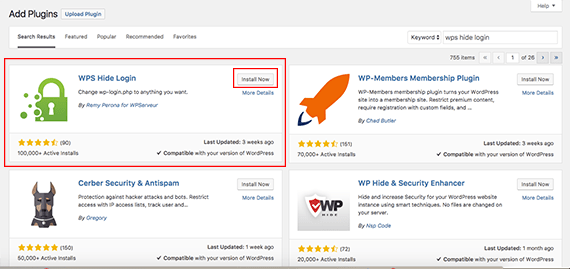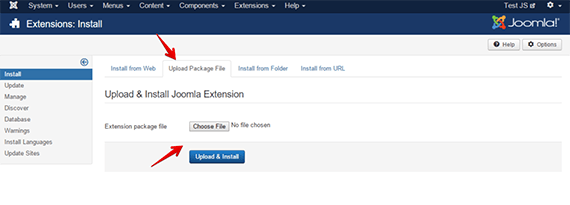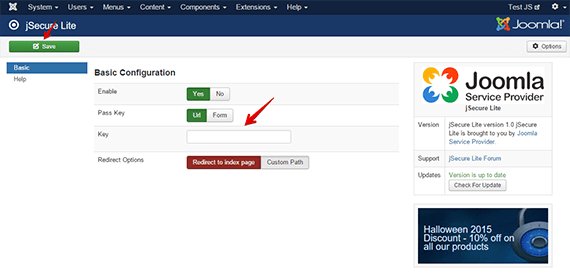Securing Your CMS Admin Login
Why should I change my admin URL?
Most Content Management Systems (CMS’s) have a unique identifying login URL. For example, WordPress uses
- domain.com/wp-admin.php
- domain.com/wp-login.php
for your admin login page. Because of this, hackers assume that is your login and can try to use this info, as well as the default username of admin. If you do not modify either of these, your potential risk for being hacked goes up exponentially. It is important that you select an administrative username that is unique to you or your business and create a secure password.
This tutorial will provide you with ways to change the login URL for the top CMS’s used today: Joomla!, Drupal, Magento, and WordPress. But before we get started, let’s look at the why.
Protect Your Site Against Brute Force Attacks
Security is the main reason to change the login page – doing so protects you against the most common type of website breach; a brute force attack. Because brute force attacks involve “guessing” login credentials, it needs three variables to succeed:
- Username – make sure you choose something unique to you or your business, don’t leave it as the default “admin.”
- Password – go for a complex password, the more generic it is, the easier it will be to guess.
- Your login URL – the admin page of your dashboard
When you use default URLs, you leave yourself more vulnerable, the hacker will only need your username and password to access a site. Changing the login URL makes hacker’s work much harder.
Hides Vulnerabilities
No CMS is perfect, like any software, a CMS is never 100% immune from bugs and vulnerabilities. The size of the communities using the most popular CMS’s means there are a lot of good people working hard to fix problems, but because of the number of websites running a CMS, any security vulnerability gets a lot of press. When news of a known vulnerability breaks, malicious hackers instantly know where your defenses are weak.
By changing the login URL, you can protect yourself against a tell-tale sign that your site is using a CMS, distancing yourself from any known problems. This won’t keep you 100% safe, but it’s a good place to start.
Changing Your Admin URL
Depending on the CMS you use, the process for changing the admin URL will be different. Use the links below to be directed to the CMS you use:
WordPress
Joomla!
Drupal
Magento
WordPress
Changing the login URL for WordPress can be accomplished two ways;
-
- by downloading and using a plugin
- Modifying the base code
There are many options for changing or hiding your login URL, but the plugin we found to work the best is the WPS Hide Login plugin. Luckily, the installation and activation for this plugin is quick and easy.
-
- Log into your WordPress dashboard.
- Click on the link for Plugins.

- Search for “WPS Hide Login” in the search bar at the top of the page.
- Select Install on the plugin when it appears in the list.

- Once the plugin is installed, go to your Active Plugins list and select Activate to activate it.

- After the plugin is activated, click on Settings to change the admin URL.

- Scroll to the bottom of the settings page, and change your admin URL in the section, then click Save Changes to save your new URL. You can choose any word to use, the more unique it is, the more secure it will be!

- Now when you log in, you will use that URL to be directed to the WordPress dashboard.
Joomla!
In order to change your admin URL with Joomla!, you will need to add an extension to your CMS called JSecure. This extension is a premium (paid) download to add to your Joomla! account, but it offers the protection from attack by changing the admin URL.
- Once you download the extension, log into your Joomla admin panel.
- Upload and install the build matching with your Joomla version.

- Click the Components link in the menu at the top of the page. Select jSecure Lite from the drop-down menu and go to Basic Configuration to configure the admin URL.
- Enable the Pass Key option and set a pass key in the Key section. The key will be your new login URL.

- Click Save and now, you will use the pass key as the ending to the login URL. It should look something like this: www.yoursite.com/administrator/?key”.
Drupal
Changing your admin URL in Drupal is not as straight forward as other CMS applications. It requires a module to be used to override the admin path. The modules will differ with different versions of Drupal, they are listed below with the instructions or link to the module file to download.
Drupal 7
Version 7.x-2.x supports Overlay module, but you can get a 404 error only when enable/disable the module with overlay. You can find instructions for installing and using the Overlay Module here: https://www.drupal.org/docs/7/administering-drupal-7-site/working-with-the-overlay
Drupal 7.x-2.3
Drupal 7.x-2.3 uses a downloadable module that can be found here: https://www.drupal.org/project/rename_admin_paths/releases/7.x-2.3.
Drupal 8.x-1.1
Drupal 8.x-1.1 uses a downloadable module, you can find it here: https://www.drupal.org/project/rename_admin_paths/releases/8.x-1.1.
Magento
The Magento admin URL is changed either through the control panel or via command line.
Change the Admin URL from Magento control panel:
- In the admin menu, select System. From the system menu, click on Configure.
- Select Admin in the panel on the left-hand side of the page.
- Expand the Admin Base URL section by clicking on it.
- Set the Use Custom Admin URL to “yes,” then enter the custom admin URL in the following format:
https://yourdomain.com/magento/
and set the Custom Admin Path to “yes.” Then enter the name of the path to your desired word.

- Click Save Config when you are done to save your changes.
- The last step in the process is to clear your cache. You can do this through the Magento admin menu selecting Cache Management from the System menu. Then select Flush Magento Cache.
Now when you log into Magento, you will use that path.
Change the Admin URL from Command Line:
-
- In the command line, open the app/etc/local.xml file to change the name of the admin path. Look for the <adminhtml>argument in the <admin> section. The default Admin Path will look like:
# <frontName><![CDATA[admin]]></frontName>
Warning:The Admin URL is case-sensitive. Use only lower-case letters to rename the admin URL path. - Once in the <admin> section, change the path, when you change it, it should look something like this:
# <frontName><![CDATA[backend]]></frontName> - The last step in the process is to flush your cache, this is accomplished by opening the var/cache folder and deleting its contents.
- In the command line, open the app/etc/local.xml file to change the name of the admin path. Look for the <adminhtml>argument in the <admin> section. The default Admin Path will look like:
Need help with this change?
Our Support techs are on duty 24/7/365 and can provide a more in depth review of these and other web hosting technologies, especially those discussed in this article. If you are unsure about walking through the steps, give us a call at 800.580.4985, or open a chat or ticket with us.
Contact Us:
Toll-Free 1.800.580.4985
International 517.322.0434
support@liquidweb.com
https://manage.liquidweb.com/
Related Articles:

About the Author: David Singer
I am a g33k, Linux blogger, developer, student, and former Tech Writer for Liquidweb.com. My passion for all things tech drives my hunt for all the coolz. I often need a vacation after I get back from vacation....
Our Sales and Support teams are available 24 hours by phone or e-mail to assist.
Latest Articles
How to use kill commands in Linux
Read ArticleChange cPanel password from WebHost Manager (WHM)
Read ArticleChange cPanel password from WebHost Manager (WHM)
Read ArticleChange cPanel password from WebHost Manager (WHM)
Read ArticleChange the root password in WebHost Manager (WHM)
Read Article


